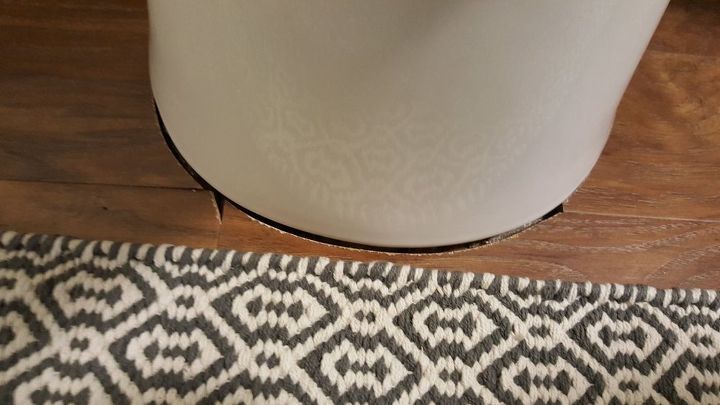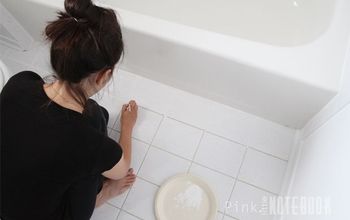Mushrooms in basement

A pipe was leaking in my 100 year old basement. The indoor-0utdoor carpet is growing toadstools. How do I go about cleaning up this mess? Of course, there are wet boxes, etc.
-
Bleach and water solution on things you can wash (may need to do several times to kill the mold spores), put items you can't in the sun, pitch those things that you can't do either with, and a really good dehumidifier. I'm no expert on mold but has worked for me in the past.
 Anne
on Jun 25, 2013
Helpful Reply
Anne
on Jun 25, 2013
Helpful Reply -
-
Thanks for the answers, but I'm still hoping for more ideas.
 Janet
on Jun 25, 2013
Helpful Reply
Janet
on Jun 25, 2013
Helpful Reply -
-
Was the leaky pipe fixed...and was it the only source of water? Many basement water / moisture issues actually start outside the basement with slope or soil drainage / foundation issues. I'm a firm believer in tiling hard surfaces in any location that can or will see water. To me the risk is not worth it.
 KMS Woodworks
on Jun 26, 2013
Helpful Reply
KMS Woodworks
on Jun 26, 2013
Helpful Reply -
-
Yes, the leaky pipe has been fixed. We have checked for other sources of water down there., But have found non-. Thank you for responding.
 Janet
on Jun 26, 2013
Helpful Reply
Janet
on Jun 26, 2013
Helpful Reply -
-
I personally wouldn't have a clue but would be concerned about toxic odors, etc, I would contact a professional about cleaning the carpet, anything in cardboard I would transfer to plastic containers and dispose of the cardboard, I've had mold grow on cardboard.
 Kim C
on Jun 26, 2013
Helpful Reply
Kim C
on Jun 26, 2013
Helpful Reply -
-
I had them growing in my basement when we first bought our house. I opened the window, scraped the floor real well with a putty knife, then put down some old towels down and soaked them with bleach. Left it sit for a few hours. Got a dehumidifer. No mushrooms anymore. That has been 19 years ago.
 Wendy Cochran
on Feb 07, 2015
Helpful Reply
Wendy Cochran
on Feb 07, 2015
Helpful Reply -
-
Due to mold growth in both my rental house and my parents' home, I've learned a LOT about mold and its removal (or, remediation, as it's formally known). One thing I did to allow me to work in the spaces without having an overblown reaction was to use "mold bombs." There are a couple of types available (online): one is less potent and costs ~$14/can, and can be used to spray inside items such as suitcases. The other costs $40/can and really means business! Both leave a slightly sweet aroma after fogging. Then surfaces such as walls, ceiling, and non-porous items are wiped down/off with light soapy water solution (or vinegar and water) -- you want to remove dead spores, too, as they can cause illness for those vulnerable. The carpet should be discarded, but carefully: Cut into manageable pieces and double-bag in heavy-duty trash bags before removing from the basement. You may want to "fog" or "bomb" again after doing this, as spores will no doubt go air-borne. Bleach generally does NOT kill mold! Most molds have significant roots that grow into any organic surface and beyond -- drywall, plaster, wood, paper, fabric, etc. Bleach will take the color out of mold, but many spores and roots will remain to regrow as soon as a little moisture shows up. Definitely get and keep a dehumidifier running; I love the pumps that can be placed in the reservoir and run a hose to the discharge pipe for washing machine (or anywhere else it can drain easily). You might also want to keep a large fan running, to keep air circulating; makes it harder for mold to grow when there is plenty of air movement. Do not replace the carpet! Basements are notoriously damp, even with precautions ... keep the concrete floor exposed. If you must have carpet, use area rugs that can be laundered regularly in hot, soapy water and dried thoroughly. Any wet cardboard boxes should be thrown out, again, carefully -- you don't want to spread the mold through your house any more than it already has been. Some contents may have to be thoroughly laundered or dry-cleaned, hard-surfaced items can be cleaned with hot soapy water solution or vinegar, but mold-infested photos, papers, etc. should be discarded unless valuable --- those, place in zip-loc bags with as much air squeezed out as possible, and open only in wide-open spaces, wearing at least a dust mask for safety. Finally, a great help in your living areas, especially bedrooms: Use an essential oil blend called "Thieves' Oil" (or any of the knock-offs, which are cheaper and not always as effective), in a diffuser. Testing has shown it to be extraordinarily effective at killing mold spores when used at heavy rates of dispersion, for 8-12 hours. It has a spicey scent that most people enjoy, and it can be added to water or vinegar for an air freshener or cleanser. There is a great deal of info online about it -- very worthwhile. You can test the air and key surfaces when done with kits available online ... there are no real standards for what's safe or not, but the goal is to have at least 50% less mold and contaminants in your house vs. what is outside. P.S. I've also had good luck sealing things such as wood bookcases with polyurethane or polyacrylic, or with latex paint that contains a moldicide (use to paint walls, too), so long as there wasn't obvious water damage. That is, the wood hasn't swollen, indicating mold has definitely been able to infiltrate the body of the item. Remember, mold loves organic materials and will feed freely on anything that qualifies ... it may not feed on metal window frames, but it will on any dust or dirt that's on the metal surface! Be diligent and be ferocious -- mold is tricky and can be disastrous to your health.
 Karen
on May 10, 2015
1 marked as helpful Reply
Karen
on May 10, 2015
1 marked as helpful Reply -
Related Discussions
How to get rid of mice?
We seem to have some unwelcome Mickeys and Minnies in our house. What is the best way to get rid of them?
How to remove popcorn ceiling with asbestos?
I want to remove my popcorn ceiling, but it has asbestos in it. How do I go about this safely?
How to caulk baseboard gaps?
How do I fill gaps at baseboard, should I caulk? If so, does anyone know how to caulk baseboards?
How to fix squeaky hardwood floors?
How do I fix squeaky hardwood floors?
Tile backsplash when there is existing countertop backsplash
We are thinking about how to add a backsplash to our kitchen. Unfortunately when we had our countertops installed we ordered a small backsplash that comes part way up... See more
Contractor mis-cut the floor when he put in the toilet
Hello, Our contractor didn't "measure twice, cut once" when he put in our toilet. Check out the photo. I'd appreciate any suggestions on a fix or a way to hide this m... See more





